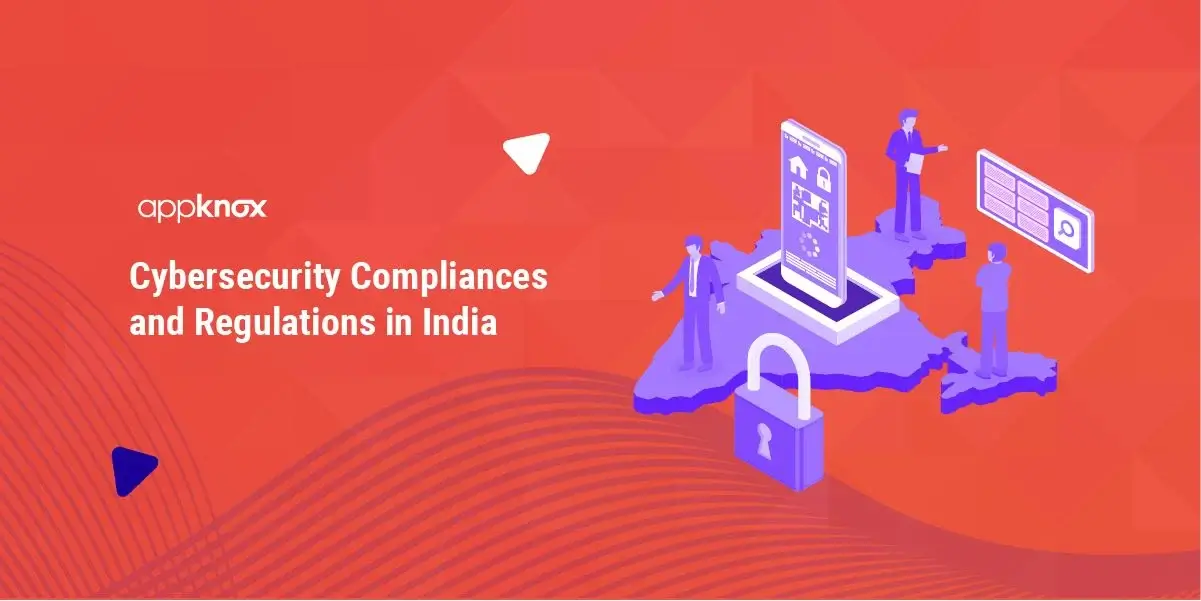If we talk about industries that have skyrocketed immensely in recent times, mobile gaming would certainly top the list. However, as fun and profitable mobile games are for users and business owners, they involve unimaginable security risks. Mobile games involve volumes of sensitive user and business data and provide a very profitable setting for cybercriminals to take advantage of.
In fact, in the last one and a half years, the gaming industry faced more than 10 billion credential stuffing attacks - the most by any industry. Also, the daily number of blocked attempts to drive users to malicious sites that exploited the gaming theme surged by 54% in the early days of the pandemic alone.
As a result, mobile gaming companies must have a comprehensive security strategy to resist the growing cybersecurity threats. Keeping up with the latest cybersecurity trends is quite beneficial. Appknox security specialists have highlighted some of the hottest cybersecurity trends that will play a critical role in the gaming industry in 2022 in our latest ebook series.
In this blog, we will briefly cover some of the highlights from our ebook - “Top Mobile Gaming Cybersecurity Trends For 2022.”
Rising Risks in the Gaming Sector
Security issues in mobile gaming can undermine players and gaming firms by revealing sensitive personal data, resulting in serious financial and reputational harm if they are not prioritized.
Cyberattacks directly target mobile gamers, with credential stuffing and phishing attacks being the most common methods of attack. Between July 2018 and June 2020, Akamai found over 100 billion credential stuffing attacks, including almost 10 billion of them aimed at the mobile gaming industry.
The number of users and detected attempts to infect mobile devices grew dramatically with the onset of the pandemic, according to a Kaspersky investigation, increasing by 185% between February and March 2020 alone.
Hackers generally attempt to break into mobile gaming accounts by using automated scripts and credentials stolen from other sources. To trick users into installing malware, hackers disguise them as game-related downloads. Once the malware is installed, it can be used to steal personal information or take control of accounts. Gaming-themed phishing schemes are highly adaptive, and as more gaming events occur, fraudsters are expanding the circumstances in which they attempt to get user data.
Top 5 Gaming Cybersecurity Trends for 2022
Thanks to the emergence of user-focused technologies, every aspect of mobile gaming nowadays appears to be evolving at a quick pace. The mobile gaming industry has seen enormous growth in recent years, not to mention the security risks that come with it.
Let's take a closer look at some of the most crucial mobile gaming security trends for 2022 highlighted in our ebook.
1) Increase in Piracy and Unauthorized Installations
Piracy and unauthorized game installations are likely to continue to plague the mobile gaming market in 2022. According to a recent study, unauthorized downloads of copyrighted materials, particularly mobile games, consume 24% of global internet bandwidth. And it's primarily thanks to third-party app stores that this is made possible.
These app stores usually entice app creators with the promise of increased revenue. In truth, these untrustworthy app stores are also home to pirated or cloned versions of the apps (especially games). These phoney apps not only carry malware but also deprive legitimate game producers of cash. For certain mobile game developers, piracy rates as high as 90% have been recorded.
Must Read: Top 7 BFSI Cybersecurity Trends for the Year 2022 that you Need to Know
2) Flaws in In-App Purchases
Mobile games appeal to millions of people around the world. According to App Annie's 2020 State of Mobile report, these games account for over three-quarters of all expenditure in mobile app stores - 72% to be exact.
While the majority of mobile games rely on in-app purchases to generate revenue, many of these systems have serious security flaws that allow hackers to gain free access to add-on items and gaming features. Because there is so much money coming into mobile games, they are a tempting target for hackers looking to profit. Hackers could:
- Bypass in-app purchases
- Unlock apps and share them with other users
- Siphon off advertising revenue by cloning apps and replacing ads
As we get closer to 2022, mobile gaming businesses will have to keep alert in order to close the gaps in their in-app transactions.
3) Easier Reverse Engineering
Reverse engineering is the process of deconstructing something in order to figure out how it works. Reverse engineering takes up a lot of time and effort in the game hacking community, with a particular focus on game clients and their communications with game servers. Hackers can exploit mobile games, just like any other unsecured mobile software, in a variety of ways.
By exploiting the game's unsecured code, attackers can get around licences and in-app purchase checks using reverse engineering techniques. They might even make adjustments or share changed apps with others, giving them unrestricted access. This type of hack can be costly to studios, and the trend appears to be gaining traction in 2022.
4) Malware on Rise
Popular online games like Minecraft and The Sims are assisting in the spreading of malware on both PCs and mobile devices, emphasizing the dangers that both games and mobile devices now represent. According to data from Atlas VPN, gaming-related undesirable software, such as malware, adware, and spyware, infected more than 303,000 PCs between July 1, 2020, and June 30, 2021.
Mobile games posed a concern as well, with as many as 50,000 players attempting to download malicious files disguised as the top ten most popular mobile games, including Minecraft, The Sims 4, PUBG, and Grand Theft Auto V.
5) Augmented Reality will Gain Momentum
AR and VR have revolutionized the globe, particularly in the gaming industry. These technologies aid in the creation of a realistic image, as well as sound and other sensations, in order to provide a virtual world that stimulates a gamer's physical presence in the environment. The market for augmented reality technology is valued at $15.3 billion, according to MarketsandMarkets.
It's worthwhile to explore the various channels and trends that are driving the rapidly growing augmented reality business. AR active devices are expected to reach 598 million units by the end of 2020, with 1.73 billion units expected by 2024.
Users will find a fully virtual world that will replace the real world which would be controlled by their body movement. As a result, it demonstrates that AR and VR technology are getting a remarkable start.
Final Thoughts
Mobile applications have always been a primary target for threat actors, and the same can be said for mobile games. The gaming industry as a whole is now aware of the current threat landscape and the damage it can cause to their brand. Organizations and individuals must develop strategies to ensure that information and systems are protected. To protect apps and users' data, stakeholders in the mobile gaming industry should consider a multilayered security approach.
Our recent ebook, Top Mobile Gaming Cybersecurity Trends, paints a clear picture of what the current cybersecurity environment for mobile gaming enterprises looks like, as well as what we can learn from some of the industry's most severe breaches. Being aware of the most recent security developments in the industry will undoubtedly offer your business an advantage over threat actors and put you ahead of your competitors.



.jpg)
 Gartner and G2 recommends Appknox | See how we can help you with a free Demo!
Gartner and G2 recommends Appknox | See how we can help you with a free Demo!
 Subho Halder
Subho Halder












_HighPerformer_HighPerformer.png)
_BestEstimatedROI_Roi.png)

